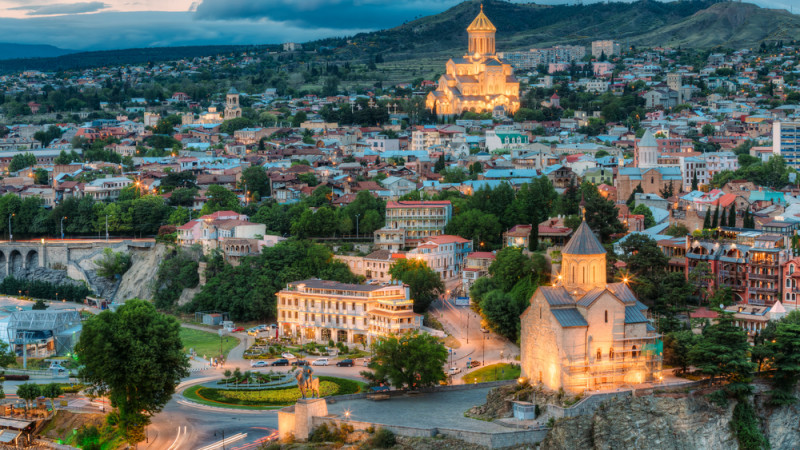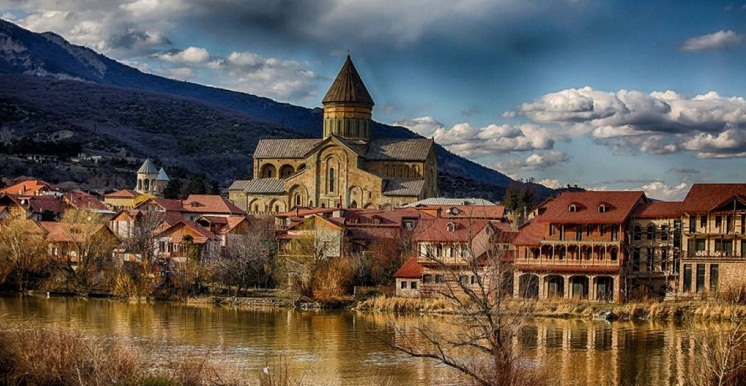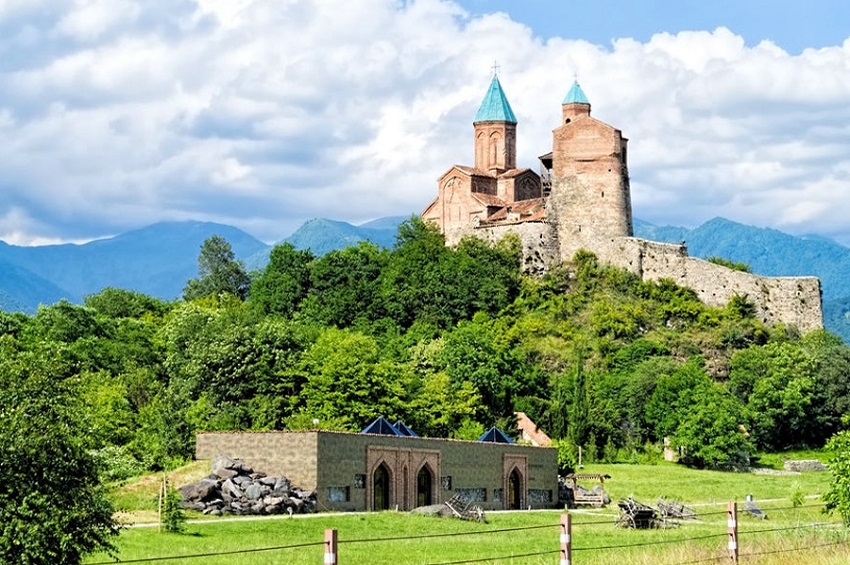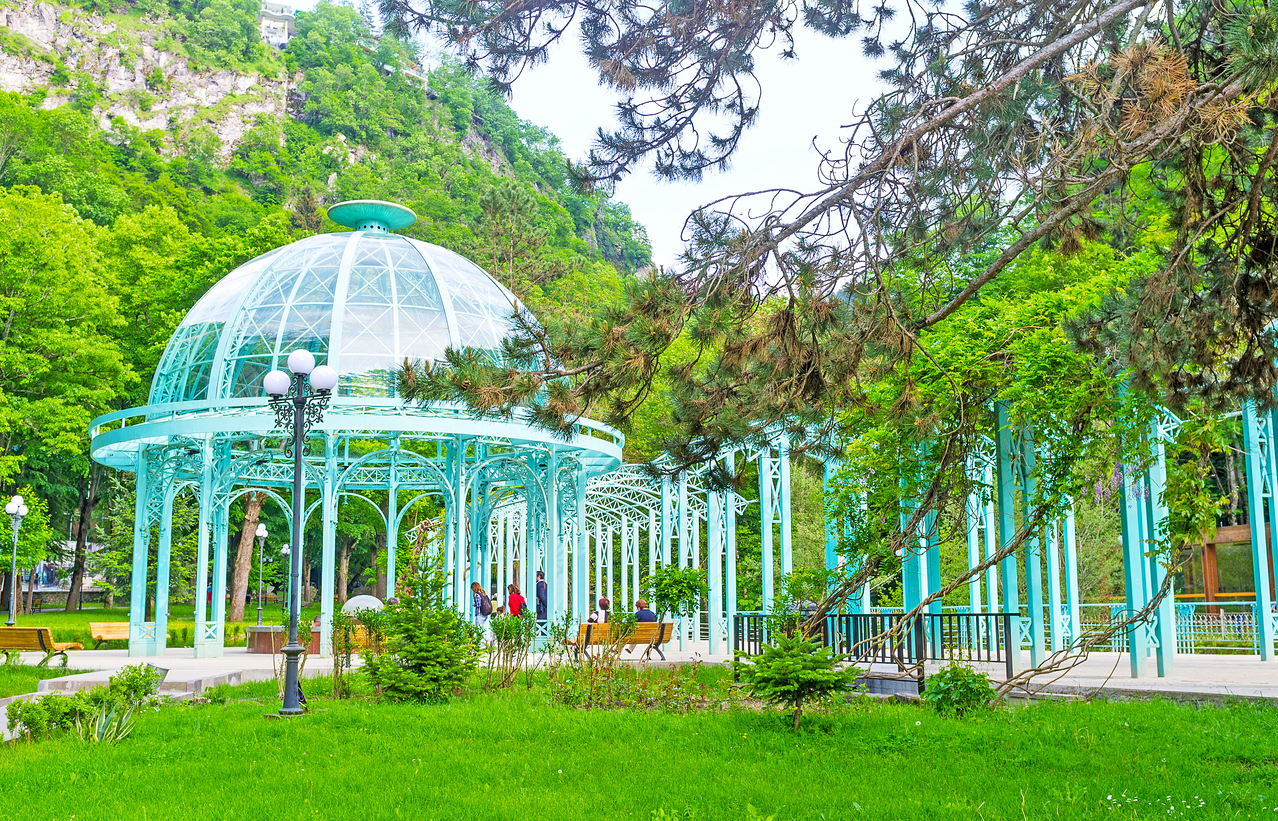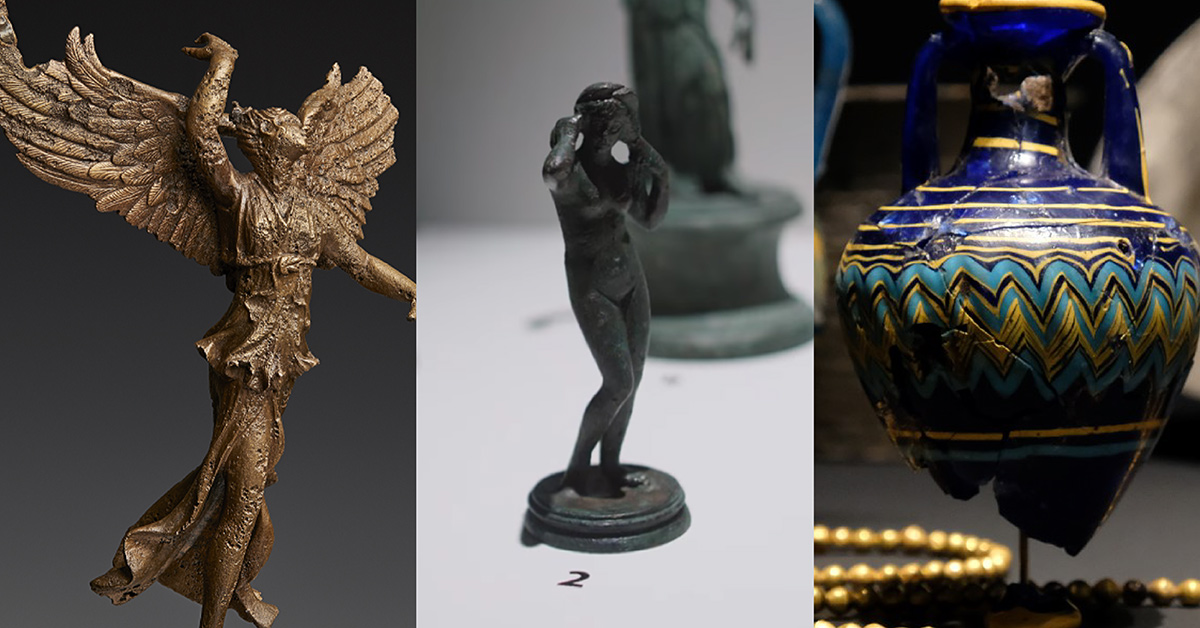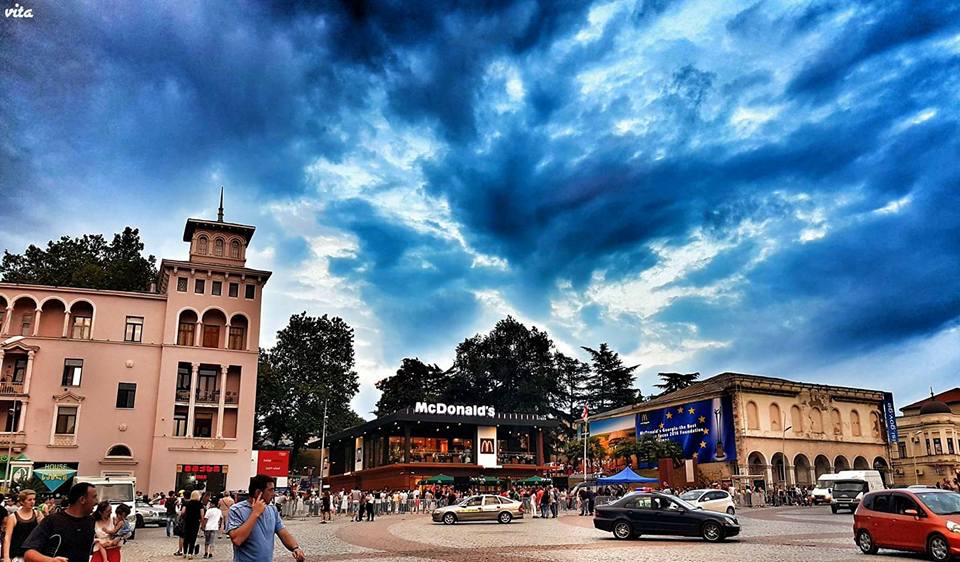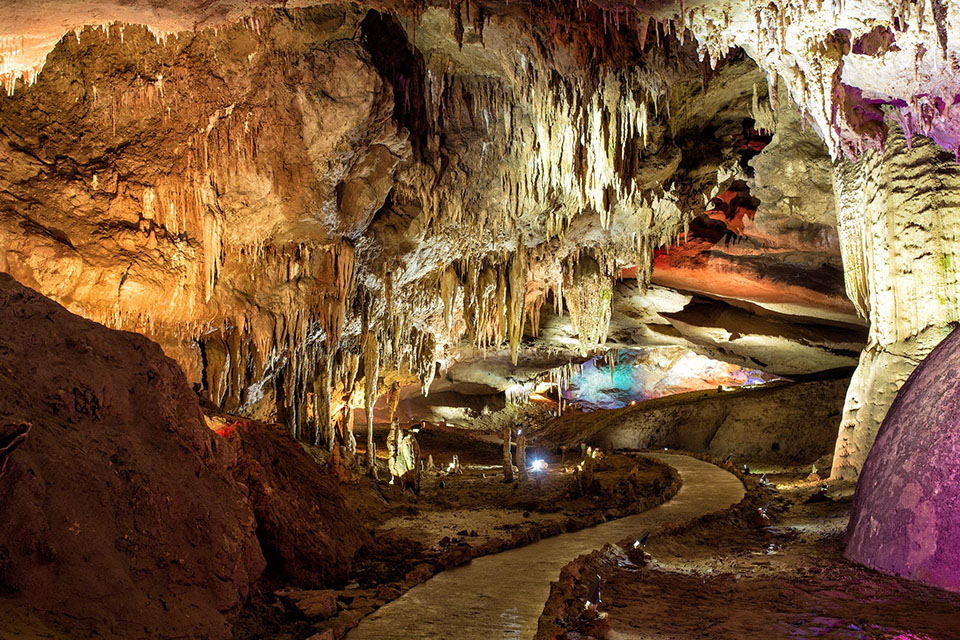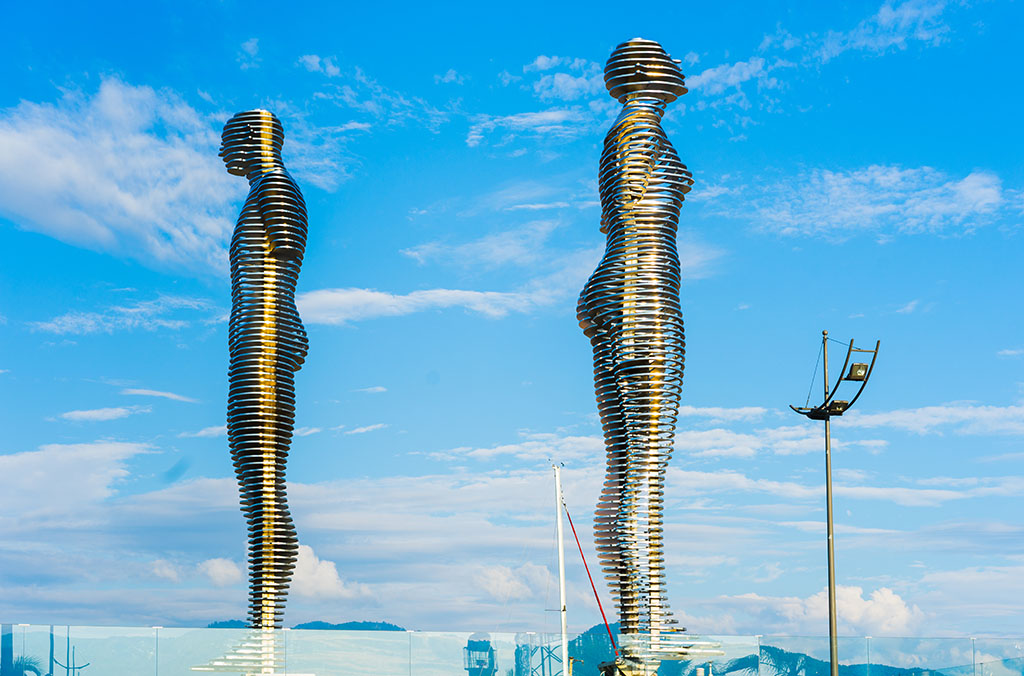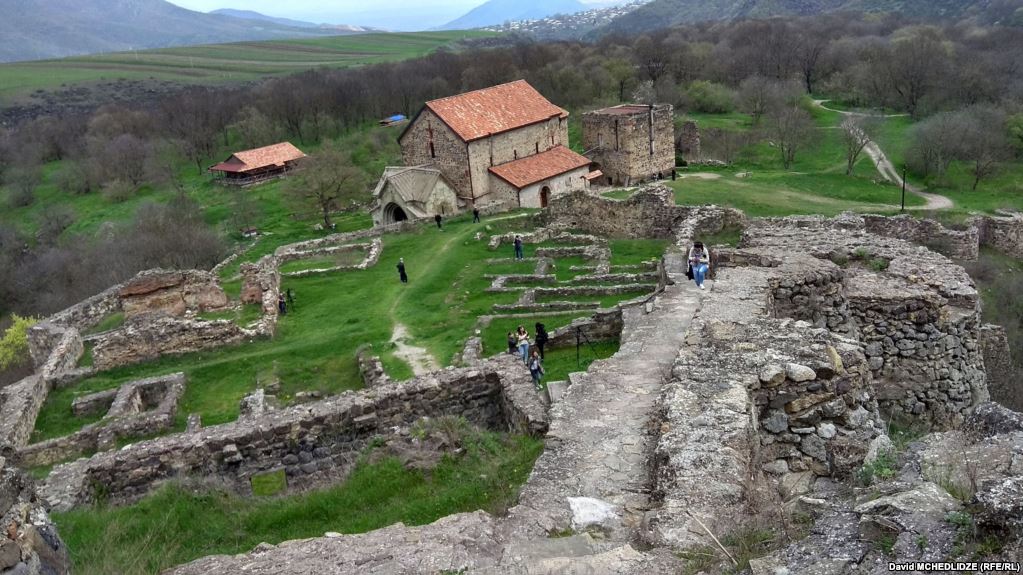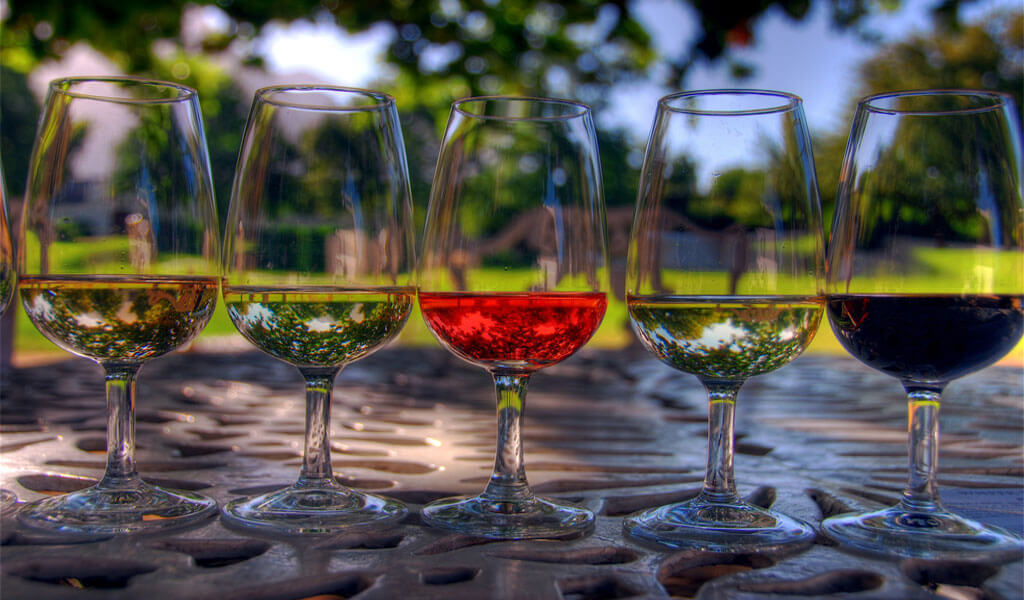Discover 3 Caucasus region countries
Find 3 difference in Caucasus countries
(Azerbaijan, Georgia, and Armenia)
Activities
- Visit World Heritage Monasteries and painted churches
- Admire breathtaking cave town, gorges and valley
- Discover three oldest Caucasian countries
- Tasting Oldest traditions of winemaking in Georgia
Itinerary
- Start in Baku and end in Tbilisi with the historical tour in Azerbaijan, Georgia and Armenia. Tour (12 days), you have a 12 days tour package taking you through Baku, Azerbaijan and 9 other destinations in three countries. Tour includes accommodation in hotel 4*, guide, all meals, transports, tickets entrance and more.
- Day 1 (excursion 5 hour)
Meeting in airport, transfer in hotel. Check inn in hotel after 14:00. After check inn, city tour in Baku and welcome dinner with guide in Azerbaijan restaurant. Overnight in Baku.
- Day 2 (excursion 6-7 hours)
- Tour starting after breakfast, visit historical art reserve “Gobustan”
Gobustan State Reserve is very rich in archeological monuments, the reserve has more than 6,000 rock carvings, which depict people, animals, battle-pieces, ritual dances, bullfights, boats with armed oarsmen, warriors with lances in their hands, camel caravans, pictures of sun and stars, on the average dating back to 5,000-20,000 years.
The rock carvings and petroglyphs at the site display mesmerizing images of prehistoric life in the Caucasus. The well-preserved sketches display ancient populations travelling on reed boats; men hunting antelope and wild bulls, and women dancing.
- After that, we go to the mud volcanoes.
Azerbaijan has the most mud volcanoes of any country, spread broadly across the country. 350 of the 800 volcanoes of the world are in the Azerbaijani Republic.[1] Local people call them “yanardagh” (burning mountain), “pilpila” (terrace), “gaynacha” (boiling water) and “bozdag” (grey mountain) alongside its geographical name – mud volcanoes.
You can take a bath.
- Gaval dash – musical rock in Gobustan reserve.
- Bibi Heybat Mosque
- Dinner in thematic Azerbaijanian restaurant, transfer to hotel
- Day 3
- After breakfast drive to Shemakha
Shamakhi was first mentioned as Kamachia by the ancient Greco-Roman Egyptian geographer Claudios Phtolemous in the 1st to 2nd century AD. Shamakhi was an important town during the Middle Ages and served as a capital of the Shirvanshakh realm from the 8th to 15th centuries.
- Lagich – small village near Shemakha
Lagich has preserved its trade and craft center up to now. You can meet there unique hand-made items from copper, adorned with carving in the form of oriental ornaments, knitted and weaved goods, wood and leather ware, souvenir knives and many other.
- Sheki – Sheki is one of Azerbaijan’s beautiful towns which is snoozing among green pillows of forested Great Caucasus Mountains. This is a small city, located in Sheki- Zagatala region of Azerbaijan on the southern picturesque slopes of the Greater Caucasus Mountains range about 325 km away from Baku and not far from Georgian border. Being most popular tourist destination in Azerbaijan, Shaki has population of about 63,000 people. City has a rich history the real atmosphere of authentic Azerbaijani town can be discovered here. Despite the many historical and architectural attractions, tourists here also enjoy strolling along the narrow streets with tiny houses famous for their red tile and carved wooden gates. Almost every house is surrounded by a garden and a fence made of river stones. Etymology of the town’s name is derived from the ancient tribe named “sakas” which inhabited in Azerbaijan 6-7 age BC.
- Overnight in Sheki – in Caravan – Sarai hotel, dinner in family restaurant
- Day 4
- Sheki – Lagodekhi (Georgia) –wine tasting in old cellar- Signagi – Bodbe monastery – Tbilisi
- Lagodekhi – is a town, located at the foot of the Greater Caucasus Mountains between the rivers Lagodekhiskhevi and Shromiskhevi, in the historical region of Hereti (now part of Kakheti). Lagodekhi has a number of nearby waterfalls and includes the Lagodekhi Nature Reserve, established in 1912 and first noted by Polish botanist Ludwik Młokosiewicz for having a variety of tree species.
- WINE CELLAR – degustation in wine cellar Georgian traditional wine making technology. Georgia is one of the oldest wine regions in the world. The fertile valleys and protective slopes of the Transcaucasia were home to grapewine cultivation and neolithic wine production (Georgian: ღვინო, ɣvino) for at least 8000 years. Due to the many millennia of wine in Georgian histo ry and its prominent economic role, the traditions of wine are considered entwined with and inseparable from the national identity.
Among the best-known Georgian wine regions are Kakheti (further divided into the micro-regions of Telavi and Kvareli), Kartli, Imereti, Racha-Lechkhumi and ert.
In 2013, UNESCO added the ancient traditional Georgian winemaking method using the QVEVRI clay jars to the UNESCO Intangible Cultural Heritage Lists.[
- Bodbe Monastery – The Monastery of St.NINO at Bodbe is a Georgian Ortodox monastic complex and the seat of the Bishop of Bodbe located 2 km from the town of Signagi. Originally built in the 4th century, it has been significantly remodeled, especially in the 17th century. The monastery now functions as a nunnery and is one of the major pilgrimage sites in Georgia, due to its association with St. Nino, the 4th-century female evangelist of Georgians, whose relics are shrined there.
- Signagi – is a town easternmost region of Kakheti. Although it is one of Georgia’s smallest towns,Signagi serves as a popular tourist destination due to its location at the heart of Georgia’s wine-growing regions, as well as its picturesque landscapes, pastel houses and narrow, cobblestones streets. Located on a steep hill, Signagi overlooks the vast Alazani Valley, with the Caucasus Mountain visible at a distance.
- Dinner in family restaurant with traditional Georgian dish with view for Alazani valley.
- Drive to Tbilisi
- Day 5
- After breakfast Tbilisi city walking tour in Old part of city and New city by auto.
- We start in the oldest part in Metekhi mount and church, after we are walking and go up to the castle by the rope way. We are visiting bathdistrict, Sioni church, Anchuskhati and many different places with rich history and different period buildings.
- After excursion lunch time
- Free time
- Dinner in restraint with show program with Georgian dance and polyphonic music.
- Transfer to hotel
- Day 6
- Tbilisi – Mtskheta – Ananuri castle – Gudauri – Stepantsminda – St.Trinity church in Gergeti – Tbilisi
- Mtskheta – capital city of Georgia from 3th century of BC, religios centre of Georgian Orthodox church. (Jvary monastery, Svetitskhoveli)
- Castle of Ananury – is castle of 15 century and it was main castle in the silk -road in this district.
- Gudauri – Ski resort over 2000 meters above sea level. This is an alpine zone. Stunning views and colorful forests along the road. Mountain rivers and bubbling springs. All this we meet on the way.
- St. Trinity church in Gergeti – The Gergeti Trinity Church was built in the 14th century, and is the only cross-cupola church in Khevi province. The separate bell-tower dates from the same period as the church itself. Its isolated location on top of a steep mountain surrounded by the vastness of nature has made it a symbol for Georgia.
- Dinner in local restaurant and taste “khinkali”
- Back to Tbilisi
- Day 7
- Tbilisi – Uflistsikhe – Gori – Borjomi – Akhaltsikhe
- Uflistsikhe – is an ancient rock-hewn town. Uplistsikhe is identified by archaeologists as one of the oldest urban settlements in Georgia. Strategically located in the heartland of ancient kingdom of Kartli. The town was cut into a flat, straight, but slightly inclining mountain. Nearly straight western wall went down to the river. Outside protection of the town was also facilitated by two motes, northern and eastern, with wall built into them.
- Gori – Stalin`s museum
- Borjomi – Spa resort of Samtskhe- Javakheti. We try spring water and have a lunch time
- Akhaltsikhe – castle of Rabat – main castle from IX c. of AC. At first it was home of Georgian lords, but after XVI century it was Osman Shah place
- Overnight in local small hotel with family local dish.
- Day 8
- Akhaltsikhe – Khertvisi castle – Vardzia – Vardzia resort
- Khertvisi fortress – is one of the oldest fortresses in Georgia and was functional throughout the Georgian feudal period. It is situated in Southern Georgia, in Meskheti region. The fortress was first built in the 2nd century BC. The church was built in 985, and the present walls were built in 1354. As the legend says, Khertvisi was destroyed by Alexander the Great
- Vardzia – is a cave monastery site in southern Georgia, excavated from the slopes of the Erusheti Mountain on the left bank of the Kura river, thirty kilometres from Aspindza. The main period of construction was the second half of the twelfth century. The caves stretch along the cliff for some five hundred meters and in up to nineteen tiers. The Church of the Dormitions, dating to the 1180s during the golden age of Tamar and Rustaveli, has an important series of wall paintings. The site was largely abandoned after the Ottoman takeover in the sixteenth century. Now part of a state heritage reserve, the extended area of Vardzia-Khertvisi has been submitted for future inscription on the UNESCO World Heritage List.
- Vardzia resort hotel, dinner, Overnight in Vardzia
- Day 9
- Vardzia – Erevan (Armenia) – Garni – Gegart – Erevan
- Lunch time in Erevan
- Garni – Garni Temple – 1st century AD The only surviving pagan temple dedicated to the sun god Migra. Garni is a symbol of pre-Christian Armenia. After the adoption of Christianity in 301, Garni became the summer residence of the sister of King Trdat III-Khosrovandukht. That is why it was not destroyed like all pagan temples and it has survived to this day.
- Geghard Monastery – IV century AD A spear was kept here, with which the Roman warrior pierced Christ, and the name “geghard” literally translates from Armenian as “spear. This is a medieval monastery in the Kotayk marz of Armenia, partially carved from a neighboring mountain, surrounded by rocks. It is a UNESCO World Heritage Site. Now this spear is kept in the museum of the Etchmiadzin Cathedral.
- Dinner in Erevan, Overnight
- Day 10
- Erevan city tour – Zvartoc – Echmiadzin
- We’ll visit the Cascade-system of step transitions, waterfalls / in October, waterfalls may not work / and flower beds, five intervals-terraces, which are open-air museums to which escalators lead. The terraces offer views of Yerevan and Mount Ararat.
Mother Armenia – a monument in honor of the victory of the Soviet Union in the Great Patriotic War in Yerevan. Height 54 m, of which 22 m – the height of the statue. Located on a hilltop in the park Akhtanak / Victory /.
Republic Square is the central square of Yerevan, the capital of Armenia. The area has two parts – circular motion and trapezoidal parts with musical fountains. The square is surrounded by five main buildings of pink and white tuff in neoclassical style with distinctive Armenian motifs. In Soviet times, the square bore the name of Lenin.
Armenian Academic Opera and Ballet Theater A. Spendiarova – The Opera House is located in the very center of Yerevan, as was planned according to the general plan of the city according to the project of Tamanyan. Opposite the southern end of the building is Freedom Square, known as one of the most beautiful squares in Yerevan. A square is located behind the square, on the eastern side of the square in the early 1960s an artificial reservoir was built – the so-called Swan Lake, resembling the shape of Lake Sevan.
- Zvartnoc– which is translated from ancient Armenian, means “Temple of the Vigilant Angels, from Armenian zvartun – an angel, a temple of early medieval Armenian architecture, located near Echmiadzin. In 2000, the ruins of the temple and the archaeological area around it are included in the UNESCO World Heritage List.
- Dinner in local restaurant, Overnight in Erevan
- Day 11
- Erevan – Sevanavank – Lake Sevan – city Delijan – Haghpat Monastery – Sanain – Georgia border – Tbilisi
- Sevanavank – Sevanavank Monastery – IX century A.D.
- This is a monastery complex located on a peninsula on the northwest shore of Lake Sevan. The monastery was originally built on the south coast of a small island. According to legend, the daughter of King Ashot I Mariam in a dream saw 12 apostles of Christ who came to her through the lake and showed the place of the church.
- City Delijan – The city of Dilijan is surrounded on almost all sides by the territory of the Dilijan Reserve – one of the richest in the South Caucasus. The city itself has been given the status of a national park. Many well-known Armenian artists, composers, scientists and directors lived and live in Dilijan. Today, the city is considered one of the most intelligent cities in Armenia. A special pride of the city is considered to be a music school, many of whose graduates become students of the Yerevan Conservatory, and a music school.
- Lunch time
- Sanahin Monastery is a monument of Armenian architecture, a medieval monastery, one of the main medieval cultural centers of Northern Armenia. The church complex dates from the X-XIII centuries. At Sanahin there was a scriptorium where books, a library and an academy corresponded. It was located in the village of Sanahin – now within the borders of the city of Alaverdi (Lori region, Armenia). Sanahin, together with the Haghpat monastery, is listed as a UNESCO World Heritage Site.
- Haghpat Monastery is a functioning monastery in the village of the same name in the north of Armenia, 10 km from the city of Alaverdi. The Haghpat Monastery is a significant monument of urban planning in medieval Armenia, characterized by the unity and compactness of the asymmetric layout, a beautiful silhouette on the mountainous terrain.
- Dinner in Tbilisi
- Transfer to hotel
- Day 12
- Transfer to airport
What`s included
- Accommodation in 3-4* hotels
2 night in Baku in Double or Twin room with breakfast
1 night in Sheki in Double or Twin room with breakfast
4 night in Tbilisi in Double or Twin room with breakfast
1 night in Akhaltsikhe in Double or Twin room with breakfast
1 night in Vardzia Resort in Double or Twin room with breakfast
2 night in Erevan in Double or Twin room with breakfast
- Guide
English speaking guide / tour leader in all tour with local guides in Azerbaijan and Armenia
- Meals
Breakfast in the morning every day / 11 times
- Additional Services
Entrance tax, water in car, presents for memory
Min group 4 person
